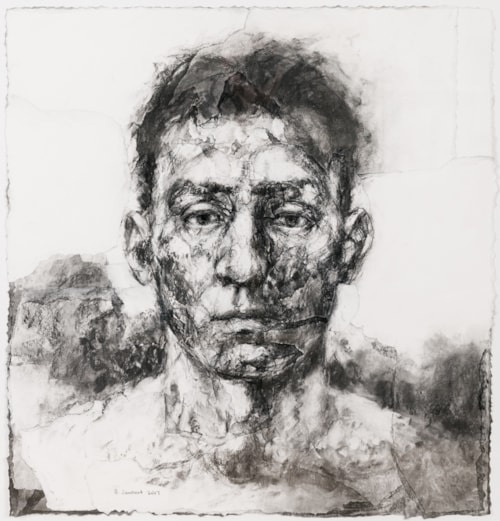
Alison LAMBERT
1957
Biography
Born in Kingston in Surrey, the British artist Alison Lambert studied at the Leek School of Art and Design at the University of Derby before earning a degree in Fine Art at Coventry Polytechnic between 1981 and 1984. After her graduation she moved into a large studio in the Canal Basin Warehouse complex in Coventry, where she still works today. Lambert had her first solo exhibition in 1988 and has since regularly shown her work in solo and group shows in London - mainly at the Jill George Gallery - and elsewhere. While her earliest drawings were rooted in pagan or mythic themes and featured human figures and horses, she eventually developed an interest in more classical forms. These in turn led to a series of monumental drawings of single figures, larger than life-size, which were begun around 2000 and garnered considerable critical attention when they were exhibited in 2005.
For the past two decades the artist has chosen to concentrate on a series of large-scale charcoal drawings of heads and faces. These compelling works - of which the present sheet, executed in 2017, is a fine example - are characterized by a visceral technique involving the repeated and vigorous application and eradication of charcoal, as well as the tearing and pasting of strips of paper to create densely layered images that, in the words of one writer, ‘inevitably cause us to reflect on their deeper meaning and their emotional force.’ The artist has also been active as a printmaker, establishing a print workshop in her studio around 2007 and producing monotypes and etchings. Drawings and prints by Lambert are today in the collections of the British Museum and the Victoria and Albert Museum in London, the Pallant House Gallery in Chichester and the Swindon Museum and Art Gallery, as well as the Minneapolis Institute of Art in Minnesota and the Art Gallery of Hamilton in Ontario.
Writing in 2005, the scholar Alan Dyer noted that, ‘During the course of her career Lambert’s drawings have provided two routes through which her ‘findings’ have been communicated. The first is the human figure which obsesses her and which she feels gets her nearer to her goal – that of unearthing a presence in the physical body; in the new work the subject is the head and the face, with its endless variety of expressive features. The second route is the physical medium she is using to carry out her interrogations; the fragmented surfaces and networks of expressive marks – metaphors not only for the internal states of her subjects but also for the emotional journey which she herself makes in excavating those states...In the new work she concentrates exclusively on portraiture, on the capacity of the human face to express or communicate intense emotion. The familiar scraped and torn surfaces of the drawings no longer strip away and undermine the identity of her subjects, they serve, rather, to intensify the emotional charge which is written into their facial features. It might be expected that the heavily eroded surfaces of the drawings would rob Lambert’s subjects of their identity and sense of humanity but this is not the case. The fragmented and ‘worried’ surfaces seem to accentuate the humanity of her subjects by giving them an even greater emotional intensity.’


